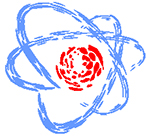Speaker
Mr
Jeremi Niedziela
(Warsaw University of Technology, CERN)
Description
Femtoscopic correlations are a great tool to investigate the shape of the emission source as well as the interactions between particles produced in the heavy-ion collisions. The shape of the baryon-(anti)baryon correlation function is affected by the size of the source, strong and Coulomb interactions and quantum statistics. In addition, baryons may come from decays of heavier particles, which will result in additional correlation structures (residual correlations). The correlation function of a given pair of particles (for example proton-antiproton) is closely connected with correlation functions of other particles (such as proton-antilambda). Measuring correlation functions of multiple baryon pairs and analysing them simultaneously is a good way to decrease uncertainties while extracting scattering parameters.
In this presentation we discuss an analysis of femtoscopic correlation functions with a newly developed fitting procedure. The procedure was applied to 2.76 TeV and 5.02 TeV Pb-Pb data measured by ALICE. The analysis was performed for all combinations of (anti)protons and (anti)lambdas, in 6 centrality bins. This gives a total of 72 functions, which were fitted simultaneously in order to maximise reliability of the obtained results.
The results of applying the aforementioned procedure will be shown and possible physical conclusions will be discussed.
Summary
For the ALICE collaboration
Primary author
Mr
Jeremi Niedziela
(Warsaw University of Technology, CERN)

